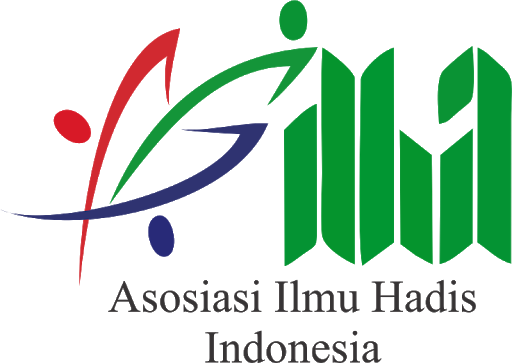Study of Living Hadith on the Reading Tradition of Ya Tarim Wa Ahlaha as a Media for Tawasul among the Banjar Society
DOI:
https://doi.org/10.14421/livinghadis.2022.4050Keywords:
Tawassul; Tradition; Deskriptive-Qualitative; Banjar’s Society; Living HadithAbstract
The meaning of the concept of tawassul shows various forms of traditions that developed in Banjarese society. One of its forms is the reading of ya Tarim wa ahlaha which is widely found in various circles. The forms of experience are varied, the first is read as a prayer in a congregation or read privately, the second is written and pasted in various places, such as restaurants, shops, and other business places to make the business smooth, in demand, and given convenience with the wasilah reading. This study aims to reveal aspects of living hadith in the experience of this tawassul practice in Banjarese society. This research uses ethnographic methods that are descriptive-qualitative. The purpose of this method is to understand other ways of life from the point of view of society. The data collection studies used are using observation, interviews, and documentation using an anthropological approach. This approach is important to use in the study of living hadith to make it easier for researchers to photograph as they are about the dimensions of beliefs, beliefs, rituals, and traditions holistically, and not to lead researchers to justify a practice that is being carried out by society.
 Abstract viewed: 649 times
|
Abstract viewed: 649 times
|
 pdf downloaded = 577 times
pdf downloaded = 577 times
References
Abu Dawud Sulayman Ibn Ash’ash. (2009). Sunan Abi Dawud. Dar al-Risalah al-’Ilmiyyah.
al-Bukhari, M. I. ’Ismail. (2001). al-Jami’ al-Sahih. Beirut: Dar al-Kutub.
Alfianoor. (2017). Ayat Al-Qur’an dalam Mantra Banjar. Jurnal Nalar (Vol. 1).
al-Maliki, M. I. ’Alawi. (n.d.). Mafahim Yajib ’an Tusahhah. Kaira: Dar al-Jawami’ al-kalim.
al-Razi, M. ibn U. (2001). mafatih al-gaib. Beirut: Dar Ihya al-Turash al-’Ilm.
Al-Tabari, M. I. J. (2001). Jami’ al-Bayan ’an Ta’wil al-Qur’an. Beirut: Dar al-Nashr.
Asmaran As. (2013). Tarekat-Tarekat di Kalimantan Selatan.
A.W. Munawwir. (2007). Kamus Al-Munawwir Indonesia Dan Arab. Surabaya: Pustaka Progressif.
Hanafi, H. (2017). Genealogi Kajian Hadis Ulama al-Banjari. Millati: Journal of Islamic Studies and Humanities, 2(2).
Liansari, N. (2022). Resepsi Ayat-Ayat al-Qur`an pada Kalangan Pemancing di Desa Tatakan, Kecamatan Tapin Selatan, Kabupaten Tapin.
M Jannah. (n.d.). Manaqib In The Reception of The Banjar Community: Sanctification of Religious Text. Ejournal.Iainsurakarta.Ac.Id.
M Munirah. (n.d.). Pembacaan Manaqib dalam Tradisi Masyarakat Banjar (Studi Living Hadis).
Muhammad ibn Mukarram. (n.d.). Mu’jam Lisānul ‘Arab li Ibn Manzur. Beirut: dar al-kutub al-’ilmiyyah.
Mujiburrahman, M. (2013). Tasawuf di Masyarakat Banjar Kesinambungan dan Perubahan Tradisi Keagamaan. Kanz Philosophia : A Journal for Islamic Philosophy and Mysticism, 3(2), 153.
Nurwana, N. (2017). Praktek Pengamalan Ayat Al-Qur’an Saat Proses Mandi Hamil Tujuh Bulan Oleh Masyarakat Kelurahan Kuin Selatan Kota Banjarmasin (Studi living Qur’an).
Qudsy, S. Z. (2016). Living Hadis: Genealogi, Teori, dan Aplikasi. Jurnal Living Hadis, 1(1), 177.
Rahman, F. (1998). Islamic Methodology in History. Islamabad: Islamic Research Institute.
Subhan, M. (2015). Kitab Shahîh Al-Bukhârî Pada Ritual Tolak Bala Di Kecamatan Daha Utara, Hulu Sungai Selatan, Kalimantan Selatan (Studi Living Hadis). Studia Insania (Vol. 3).
Taubah, M. (2022). Historiografi Etnis Arab Di Indonesia. Journal Multicultural of Islamic Education, 6(2), 127–136.
Wahyudin. (2021). Menyoal Gerakan Salafi di Indonesia (Pro-Kontra Metode Dakwah Salafi) Wahyudin. Al-Tafaqquh: Journal of Islamic Law, 29–48.
Zarkasyi, M. (2014). Pemikiran Tasawuf Muh Arsyad al-Banjari dan Pengaruhnya di Masyarakat Kalimantan Selatan. ISLAMICA: Jurnal Studi Keislaman, 3(1).
Downloads
Published
Issue
Section
License
Copyright (c) 2022 Akhmad Sagir, Hanafi Hanafi

This work is licensed under a Creative Commons Attribution-ShareAlike 4.0 International License.
- Authors who publish with this journal agree to the following terms:
- Authors retain copyright and grant the journal right of first publication with the work simultaneously licensed under a Creative Commons Attribution License that allows others to share the work with an acknowledgement of the work's authorship and initial publication in this journal.
- Authors are able to enter into separate, additional contractual arrangements for the non-exclusive distribution of the journal's published version of the work (e.g., post it to an institutional repository or publish it in a book), with an acknowledgement of its initial publication in this journal.
- Authors are permitted and encouraged to post their work online (e.g., in institutional repositories or on their website) prior to and during the submission process, as it can lead to productive exchanges, as well as earlier and greater citation of published work.
















